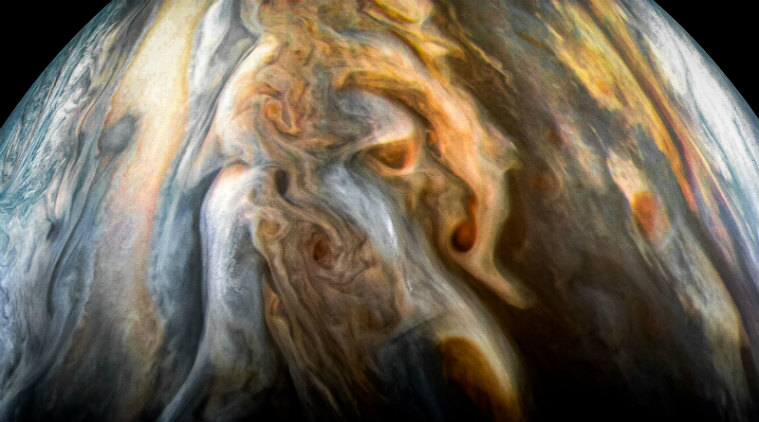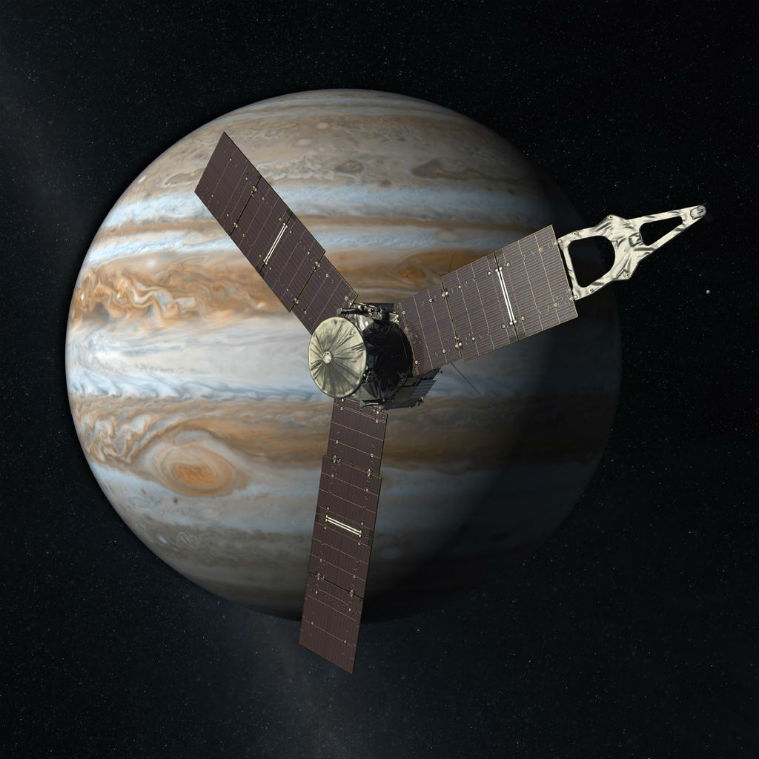 The JunoCam imager aboard NASA’s Juno spacecraft captured this image of Jupiter’s southern equatorial region on Sept 1, 2017 (Image: NASA/JPL-Caltech/SwRI/MSSS/Kevin M. Gill)
The JunoCam imager aboard NASA’s Juno spacecraft captured this image of Jupiter’s southern equatorial region on Sept 1, 2017 (Image: NASA/JPL-Caltech/SwRI/MSSS/Kevin M. Gill)
NASA’s 1995 Galileo mission to Jupiter opened up a mystery about the water on the gas giant. After more than two decades, the space agency’s Juno mission gives some clarity as it published its first stream of data on the amount of water in Jupiter’s atmosphere.
The findings of the Juno mission have been published in the journal Nature Astronomy. Juno results estimate that at the equator, water makes up about 0.25 per cent of the molecules in Jupiter’s atmosphere, which is almost three times that of the Sun. The comparison is not based on liquid water but on the presence of its components– oxygen and hydrogen.
Scientists have been longing for the accurate estimate of the total amount of water in Jupiter’s atmosphere. The Juno findings are the first to suggest the abundance of water on the gas giant, whereas the space agency’s Galileo mission had suggested that Jupiter might be extremely dry compared to the Sun. Scientists believe that Galileo was just unlucky, sampling an unusually dry and warm meteorological spot on Jupiter.
NASA says that Jupiter was likely the first planet to form, and it contains most of the gas and dust that wasn’t incorporated into the Sun. The water abundance has important implications for the gas giant’s meteorology and internal structure. NASA is sure of the presence of water on Jupiter, but the agency has yet to find an accurate estimate of the amount of water deep within Jupiter’s atmosphere.
 Juno spacecraft successfully entered the orbit of Jupiter on July 4, 2016. (Image: NASA)
Juno spacecraft successfully entered the orbit of Jupiter on July 4, 2016. (Image: NASA)
A rotating, solar-powered spacecraft, Juno launched in 2011 to obtain water abundance readings across large regions of the Jupiter with a new kind of instrument for deep-space planetary exploration. Juno’s Microwave Radiometer (MWR) observes the gas giant from above using six antennas that measure the atmospheric temperature at multiple depths simultaneously.
“The Microwave Radiometer takes advantage of the fact that water absorbs certain wavelengths of microwave radiation, the same trick used by microwave ovens to quickly heat food. The measured temperatures are used to constrain the amount of water and ammonia in the deep atmosphere, as both molecules absorb microwave radiation,” NASA said in a press release.
Express Tech is now on Telegram. Click here to join our channel (@expresstechie) and stay updated with the latest tech news
The Juno findings have been generated by the Juno science team using the data collected during the spacecraft’s first eight science flybys of Jupiter. The team initially concentrated on the equatorial region as the atmosphere there appears more well-mixed even at depth when compared to other regions. Juno was able to collect data from a far greater depth into Jupiter’s atmosphere than the Galileo.
“We found the water in the equator to be greater than what the Galileo probe measured,” said Cheng Li, a Juno scientist at the University of California, Berkeley. “Because the equatorial region is very unique at Jupiter, we need to compare these results with how much water is in other regions.”